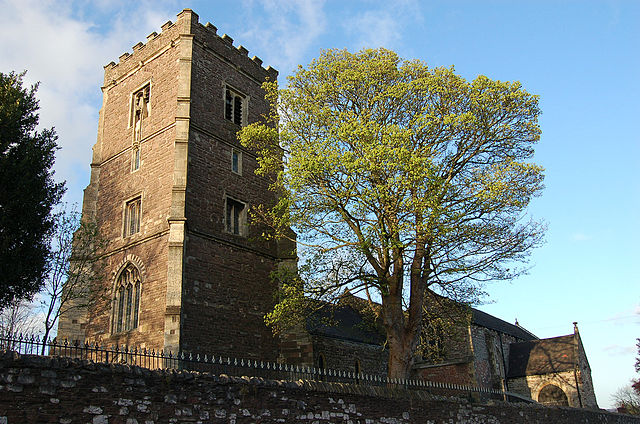Newport Cathedral in the city of Newport in Wales is the cathedral of the Diocese of Monmouth, in the Church in Wales, and seat of the Bishop of Monmouth. The full title is Newport Cathedral, Woolos, King & Confessor.
The name “Woolos” is a corruption of Gwynllyw, the 5th century Welsh saint who first founded a religious establishment on the site.
Pre-Norman establishment
The present building has sections that date from pre- Norman times. In the ninth century the wooden church formerly on the site was rebuilt in stone. This indicates the importance of the cult of Saint Gwynllyw and the wealth of his shrine as stone buildings were unusual in Wales at this point. Part of this building is now incorporated into St Woolos cathedral as the Galilee chapel now at the west end of the Cathedral
Mediaeval History
It was badly damaged in 1402 when Newport was attacked by the forces of Owain Glyndŵr and underwent a major rebuilding including the addition of the tower.
It also seems to have been damaged in the Civil war period when a statue above the main entrance representing a benefactor of the church seems to have lost its head. It is either Jasper Tudor, the Earl of Pembroke, or Humphrey Stafford, 1st Duke of Buckingham as both helped rebuild it after Glyndwr”s attack.
Recent History
It has been partially rebuilt or extended in every period up to the 1960s. It is currently undergoing much-needed repairs and an appeal fund has started. In 1929 St Woolos became the Pro-Cathedral of the new Diocese of Monmouth, attaining full cathedral status in 1949.
With the Enthronement of Rowan Williams as Archbishop of Wales in February 2000, the Cathedral became the Metropolitan Cathedral for Wales for the third time in its life. The Cathedral continues to serve Wales, the diocese and the City of Newport; it also serves a large parish.
It is also a place of pilgrimage for political and industrial historians – a plaque in the church yard commemorates the bloody suppression of the Chartist rebellion here in 1839.
Discover more from LandmarkLocation.com
Subscribe to get the latest posts sent to your email.

